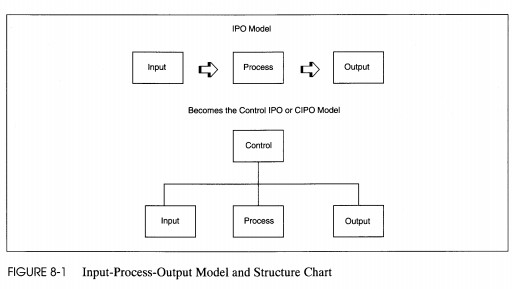Process-Oriented Design
2. Conceptual Foundations
The concept 'form follows function' that informed analysis is again the basis for structured design. The application processes determine the form of the application. The divide and conquer principle guides the definition of the smallest solvable parts while keeping the general goals of maintainability and low cost in mind. Partitioning and functional decomposition are the basic activities used in dividing processes into modules. The basic input-process-output (IPO) model from the DFD results in a structure chart that adds a control component to the IPO model (see Figure 8-1).
Principles of good structured design are information hiding, modularity, coupling, and cohesion. Information hiding means that only data needed to perform a function is made available to that function. The idea is a sound one: You cannot mess up what you don't have access to. Modularity is the design principle that calls for design of small, self-contained units that should lead to maintainability. Following systems theory, each module should be a small, self-contained system itself. Coupling is a measure of intermodule connection with minimal coupling the goal (i.e., less is best). Cohesion is a measure of internal strength of a module with the notion that maximal, or functional, cohesion is the goal. These principles are related to the process of design in the next section.

FIGURE 8-1 Input-Process-Output Model and Structure Chart